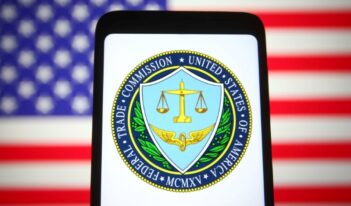
Empirical data suggest that law schools must do more to promote inclusion, not just diversity.
Racism has been embedded in American society since its founding. The systemic nature of racism means that it continues to infect our daily lives, institutions, and processes.
Although legal education can be an avenue for progress for vulnerable populations, higher education overall is inflicted with the same social ills as the rest of society. This year—as people around the country have stayed home to slow the spread of COVID-19 and taken to the streets to protest anti-Black violence—issues of diversity, equity, and inclusion have risen to the forefront of public discussion. Faculty, staff, students, and administrators at law schools are being encouraged to look inward—to “listen and learn from each other’s experiences, lead our communities by example, audit our schools to ensure progress toward racial equality, … influence policy, and iterate our commitment to the fight for racial equality.”
This call to action is especially timely and important as recent empirical data suggest that racial disparities are as pronounced in legal education as elsewhere, both for students and for faculty.
For over 15 years, the Law School Survey of Student Engagement (LSSSE) has administered a survey covering a range of issues related to the student experience. With almost 400,000 responses over 16 years, LSSSE houses perhaps the largest dataset on law students, including demographics, preferences, attitudes, and experiences.
In February 2020, LSSSE introduced a new module focused on diversity and inclusiveness. Diversity and Exclusion, the resulting report that I coauthored, reveals significant differences in law student experiences with diversity and inclusion based on race, ethnicity, gender, sexual orientation, first-generation status, debt level, and more.
The results cannot report an objective truth about whether schools are promoting racial and ethnic diversity. Rather, LSSSE data reveal that students from different backgrounds have different perceptions of the same initiatives. For instance, nearly a quarter (23 percent) of Black law students across the country believe their schools do “very little” to “provide a supportive environment” for racial/ethnic identity on campus, although about a third (32 percent) of white students think their schools do “very much.” Furthermore, 20 percent of gay students, 16 percent of lesbians, 15 percent of bisexual students, and 19 percent of those identifying as another sexual orientation believe their schools do “very little” to ensure students are not stigmatized based on their identity—though 89 percent of heterosexual students believe their schools do more.
Students with less privilege also feel less valued by their law school. A full third (33 percent) of “first-gen” students—those who are the first in their families to complete college—as well as 38 percent of students who have the highest debt loads—owing over $200,000—do not feel valued by their law school. On the other hand, nearly one-third (31 percent) of students with little or no debt—$40,000 or less—“strongly agree” that their institution does value them.
Perhaps most troubling is the disparity in comfort levels between students of different backgrounds, especially because belonging is key to academic and professional success. While the overwhelming majority of white students—88 percent—report that they are comfortable on campus, a full 21 percent of Native American, Black, and Latinx students, as well as 32 percent of students whose parents did not finish high school, disagree with the statement, “I feel comfortable being myself at this institution.”
Schools also tout the importance of producing practice-ready graduates, and students from all backgrounds agree that they have learned to “work effectively with people from diverse backgrounds.” Yet they do not feel equally prepared to confront diversity-related issues. Nearly one-third (32 percent) of white men believe their schools have done “very much” to share information on anti-discrimination and harassment policies, although an almost equal level (27 percent) of Black women believe their schools do “very little” to provide this critical information.
Overall, these findings reveal that students who are white, male, straight, have low levels of debt, and whose parents are highly educated see their schools as adequately supporting diversity, equity, and inclusion. I conclude, however, that “those who are most affected by policies involving diversity—the very students who are underrepresented, marginalized, and non-traditional participants in legal education—are the least satisfied with diversity efforts on campuses nationwide.” Although law schools have fostered diversity, they have not reached full inclusion.
Law faculty data similarly confirm differences in experience based on professors’ backgrounds. In Unequal Profession: Race and Gender in Legal Academia, I reveal significant raceXgender bias facing women-of-color faculty. These intersectional challenges manifest as silencing by colleagues, a presumption of incompetence from students, outright discrimination in hiring and promotion, and a general feeling of lack of belonging among non-traditional faculty.
For instance, while almost one-quarter (24 percent) of Black faculty characterize relationships with white colleagues as “distant,” almost all white professors report “sociable” or “very friendly” relationships with Black colleagues. In other words, “white faculty members believe their relationships with faculty of color are much better than faculty of color view those same relationships.”
In another empirical study of tenured law faculty, Katherine Barnes and Elizabeth Mertz reveal that while only 35 percent of white male professors “found the tenure process difficult,” roughly half of men of color and white women agreed—at 48 percent and 55 percent, respectively—along with a full 61 percent of women of color.
Qualitative data from Unequal Profession highlight how biased student evaluations contribute to ongoing raceXgender disparities. For instance, a professor named Joe offers a representative response for white men, noting that his teaching evaluations “have always, consistently been very strong.” A white male professor named Ian says his reputation among students is as “one of the most challenging professors and they appreciate that in terms of the subject and expectations.”
On the flip side, women of color are denied promotion when their evaluations are even “a bit polarized,” as a Latina professor named Alicia discovered when her dean broke the news. Furthermore, student evaluation comments about women-of-color professors highlight physical appearance even over expertise. Natalie, a multiracial professor, received the comment, “Why doesn’t she wear her wedding ring? Is she trying to tease us?” Another student commented about a professor named Patrice, saying “She’s Black. Enough said.”
Overall, empirical data demonstrate how even with some measure of diversity, law schools remain far from attaining full inclusion—for students as well as faculty. During this period of introspection and preparation for action, law schools should use these data to consider opportunities for improvement. Rather than focusing solely on recruitment, schools must turn their attention to retention to maximize outcomes for law students, law faculty, and legal education as a whole.
This essay is part of a series entitled Racism, Regulation, and the Administrative State.




